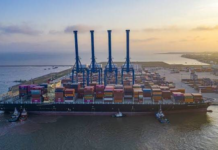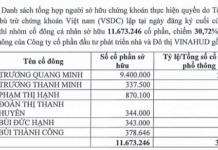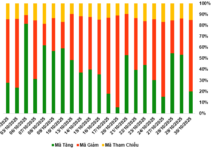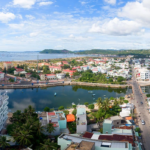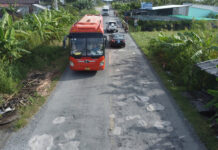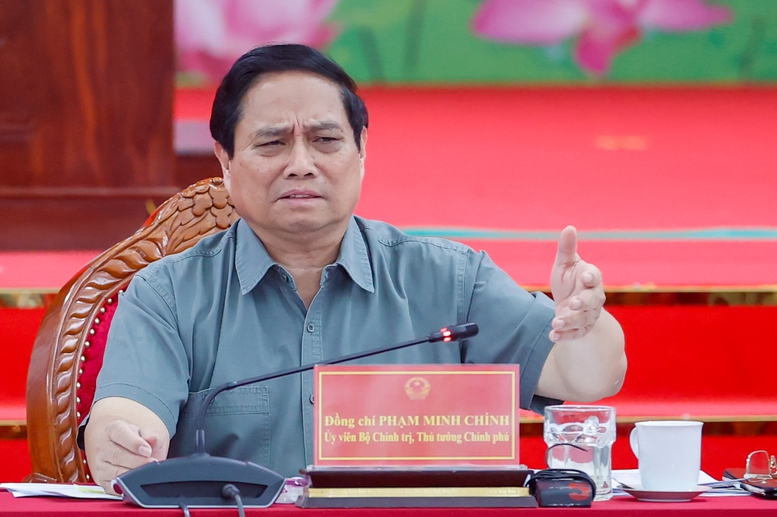
Prime Minister Pham Minh Chinh emphasized: Implementing the projects is a political task, a demand of the heart, and the expectation of the people in the Mekong Delta region – Photo: VGP/Nhat Bac
The conference was also attended by members of the Party Central Committee: Deputy Prime Minister Tran Hong Ha, Deputy Prime Minister Ho Duc Phoc, ministers, secretaries of provincial Party Committees, and leaders of Ho Chi Minh City, Binh Duong province, and enterprises and contractors participating in transportation infrastructure projects in the Mekong Delta.
9 projects with a total investment of VND 106,000 billion
According to the report by the Ministry of Transport, the Mekong Delta region is currently implementing 9 key national and transport sector projects with a total investment of about VND 106,000 billion.
Among these, 8/9 projects are under construction. The My An-Cao Lanh Expressway project (funded by Korean ODA) managed by the Ministry of Transport is completing procedures and expected to be inaugurated in early 2025.
Of the total number of projects under construction, 6 projects are planned to be completed in 2025, including 4 expressway projects with a total length of 207 km under the plan to complete 3,000 km and 2 bridge and road projects.
The Chau Doc-Can Tho-Soc Trang Expressway project is expected to complete the whole route in 2026 and be put into operation in 2027; Component 2 of the Cao Lanh-An Huu (Tien Giang) project and the Dai Ngai Bridge project (managed by Project Management Unit 85) will be completed in 2027.
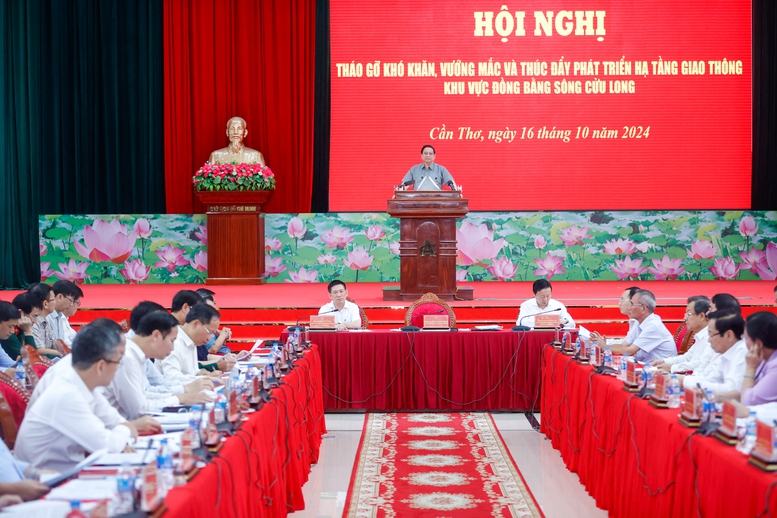
Looking forward, the Prime Minister clarified the need to accelerate and break through more vigorously and effectively in project implementation, with higher political determination and more scientific and efficient approaches – Photo: VGP/Nhat Bac
At the conference, the leaders of the localities reported on the implementation of the projects and the demand for materials (Ho Chi Minh City reported on the Ring Road 3 project; Can Tho city reported on Component 2 of the Chau Doc-Can Tho-Soc Trang project; Hau Giang province reported on Component 3 of the Chau Doc-Can Tho-Soc Trang project…); the provinces of Tien Giang, Ben Tre, Soc Trang, Vinh Long, Dong Thap, An Giang, Binh Duong, Dong Nai, and Ba Ria-Vung Tau reported on the supply of materials; the management boards and contractors presented their difficulties and obstacles; the Ministry of Natural Resources and Environment reported on the exploitation of construction materials (stone, sand, and gravel…); and the Ministry of Planning and Investment reported on the allocation of capital for transportation infrastructure projects in the Southern region and the Mekong Delta…
Regarding the Ring Road 3 project in Ho Chi Minh City, the city’s leaders stated that the total sand demand of the four localities where the project passes through is about 9.2 million cubic meters. Up to the present, three localities have committed to providing approximately 10 million cubic meters of sand for the project.
Based on the Prime Minister’s and Deputy Prime Minister’s previous instructions, sand has been basically provided for the project. The sand demand for the Ring Road 3 project in 2024 is 5 million cubic meters, and the mobilized volume to the construction site is 1.8 million cubic meters. Other issues, such as site clearance, capital disbursement, and construction organization, have basically met the requirements. The localities committed to the common schedule of the project, with the entire route expected to be opened to traffic by the end of 2026, and some sections to be completed and opened to traffic in 2025.
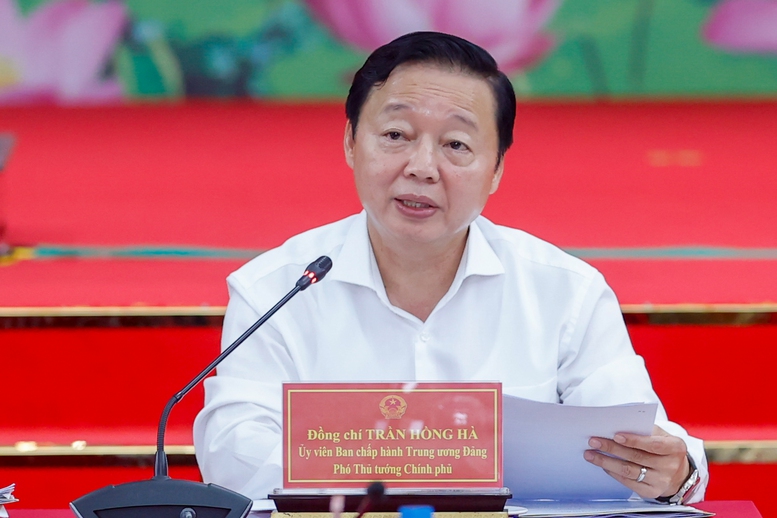
Deputy Prime Minister Tran Hong Ha speaks at the conference – Photo: VGP/Nhat Bac
Mekong Delta Expressway Network Sees Significant Progress
Concluding the conference, Prime Minister Pham Minh Chinh assigned the Ministry of Transport and the Government Office, along with relevant ministries, sectors, and localities, to synthesize and maximize the opinions, complete, and soon issue the Conference Conclusion Notice for unified implementation.
Once again, the Prime Minister emphasized the spirit of the 10th Plenum of the Party Central Committee: Accelerate and break through; focus on science, technology, and innovation; decentralize and devolve powers to the maximum extent to ministries, sectors, and localities, with the principle of “localities decide, localities do, and localities take responsibility,” and localities are the beneficiaries; and only discuss doing, not retreating. Most recently, General Secretary and President To Lam wrote an article on “Combating Wastefulness.” The Prime Minister clarified that if the projects are prolonged and face capital escalation, they will cause wastefulness.
According to the Prime Minister, developing a synchronous and modern infrastructure system is one of the three strategic breakthroughs set out by the 13th Party Congress. The goal is to have 3,000 km of expressways by 2025 and 5,000 km by 2030.
The Prime Minister has established the State Steering Committee for important national and transport sector projects. To date, the Steering Committee has held 14 meetings and issued 14 conclusion documents. At the same time, the Prime Minister has issued more than 400 documents to direct, urge, and monitor the implementation of expressway projects.
Regarding strategic transportation infrastructure projects in the Mekong Delta region, the Prime Minister has directly worked with ministries, sectors, and localities in the region five times. He has also inspected construction sites, urged, and visited and encouraged officials, engineers, workers, and contractors to accelerate the progress, and remove difficulties.
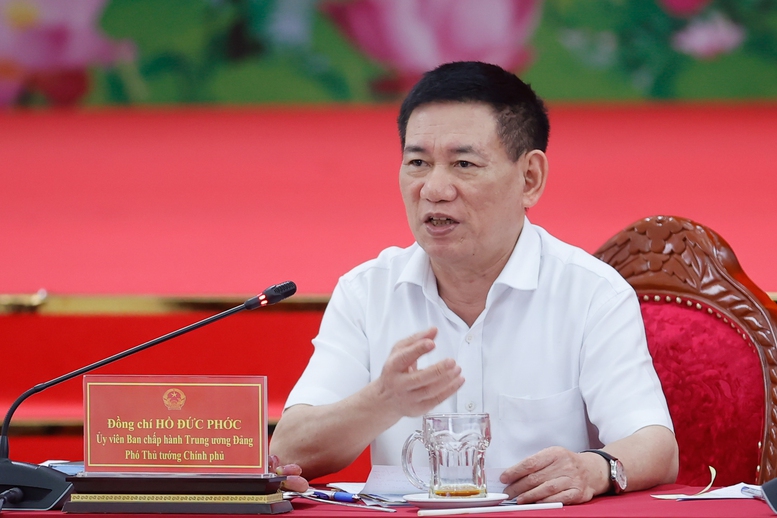
Deputy Prime Minister Ho Duc Phoc speaks at the conference – Photo: VGP/Nhat Bac
“After three years since the start of research and implementation of the Mekong Delta expressway projects, the initial results show that we have turned the impossible into possible, the difficult into easy, and the unimaginable into reality. From just ideas, we now have specific projects and visible expressway sections and bridges. We have also secured sufficient funding and transformed vast rice fields into modern expressways, bringing great development prospects to the Mekong Delta region,” emphasized the Prime Minister.
According to the approved planning, the Mekong Delta region has 6 expressways with a total length of about 1,200 km. Before this term, the whole region had only 39 km of expressways, and no projects were prepared for investment.
With the strong determination of the Central Government and the localities, the Mekong Delta, once considered a “lowland” of expressways, now sees significant progress in its transportation infrastructure connectivity.
Currently, the region has 120 km of expressways in operation, 428 km under construction, and is striving to basically complete 600 km by 2025. There are also 215 km under study for investment preparation (including Duc Hoa-My An (74 km), My An-Cao Lanh (26 km), Ha Tien- Rach Gia (100 km), and Can Tho 2 Bridge (15 km).
“Implementing the projects is a political task, a demand of the heart, and the expectation of the people in the Mekong Delta region,” said the Prime Minister.
Along with this, the localities, contractors, and construction units have become more mature and capable of implementing large-scale projects. Most of the filling materials (over 37 million cubic meters out of the total demand of about 65 million cubic meters) have been arranged for the projects in the Southern region.
Site clearance has basically met the progress, with over 90% of the area handed over, and many projects have completed 100% clearance. The resettlement and livelihood support for the people have been well implemented by the localities. Security, order, and social safety have been ensured at the project sites, and the people have supported the projects.
Analyzing the reasons
, the Prime Minister pointed out that the achievements are thanks to the leadership of the Party and the strong involvement of the entire political system, ministries, sectors, and especially the local Party committees and authorities, as well as the active participation and consensus of the people and enterprises.
In addition, difficulties and obstacles during the implementation process, especially legal and investment procedures and capital sources, have been promptly addressed. The contractors, engineers, workers, and employees have been determined with the spirit of “overcoming the sun and winning against the rain,” “eating hastily and sleeping urgently,” working in “3 shifts and 4 groups,” “through holidays and Tet, and working on Saturdays and Sundays”; and the support and sharing of the people who have given up their land and living space for the construction sites have also contributed to the progress.
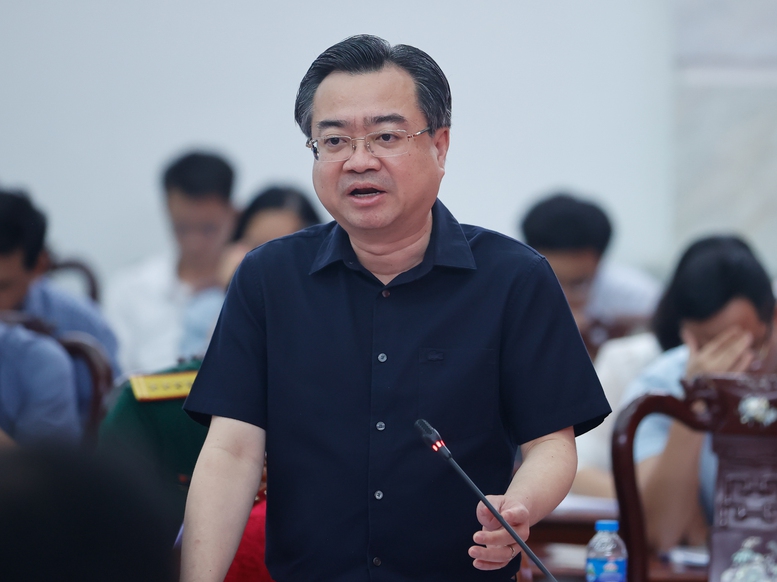
Minister of Construction Nguyen Thanh Nghi speaks at the conference – Photo: VGP/Nhat Bac
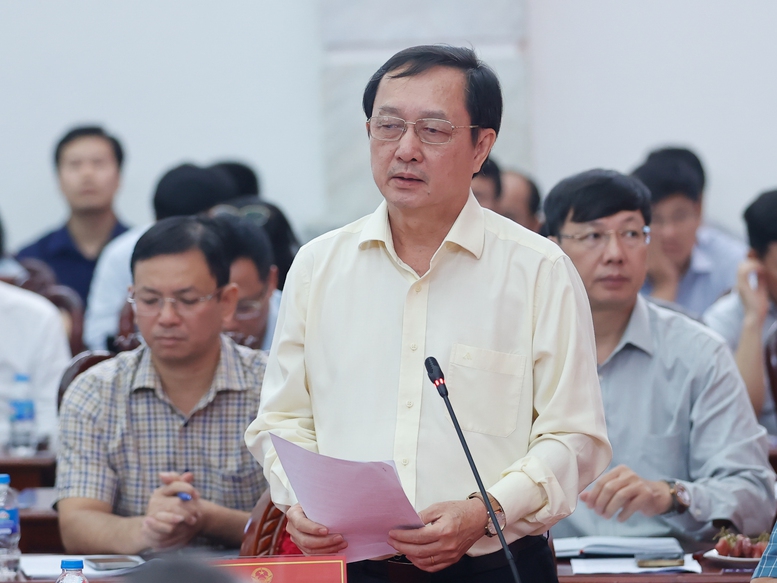
Minister of Science and Technology Huynh Thanh Dat speaks at the conference – Photo: VGP/Nhat Bac
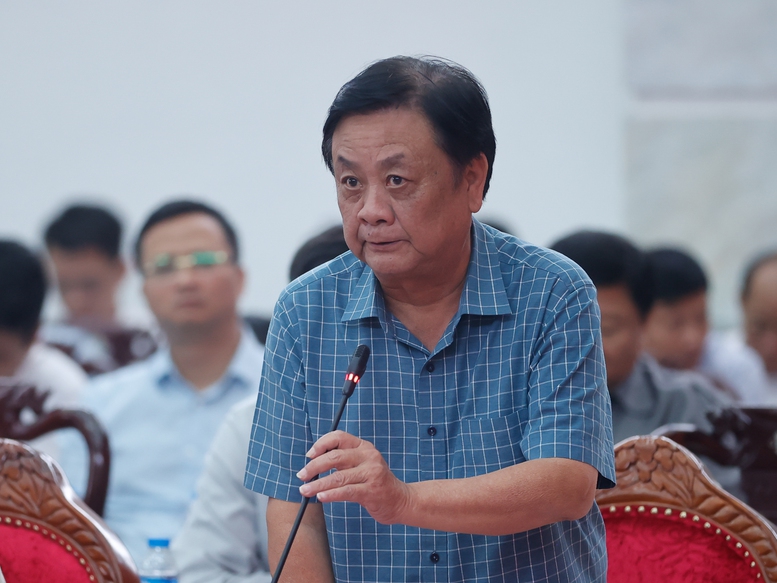
Minister of Agriculture and Rural Development Le Minh Hoan speaks at the conference – Photo: VGP/Nhat Bac
On behalf of the Government, the Prime Minister acknowledged, commended, and highly appreciated the ministries, sectors, localities, agencies, units, enterprises, and contractors that have strongly implemented the Government’s and Prime Minister’s directions to remove obstacles in task performance, contributing to transforming the expressway system in the Mekong Delta.
At the same time, the Prime Minister commended the provinces of Tien Giang, Ben Tre, Vinh Long, An Giang, and Soc Trang for promptly working with investors and project management boards to handle licensing procedures and exploit mines to provide filling materials and stone chips. He also praised the localities with stone sources (Kien Giang, An Giang, and the Southeast region) for actively implementing licensing procedures for mine exploitation in accordance with special mechanisms.
The Prime Minister congratulated the localities in the Mekong Delta region, which are forming a transportation infrastructure system connecting the region internally and with other regions in the country. This will open up new development space, reduce logistics costs and input costs, enhance the competitiveness of goods, and bring benefits to the localities, the whole region, and the country.
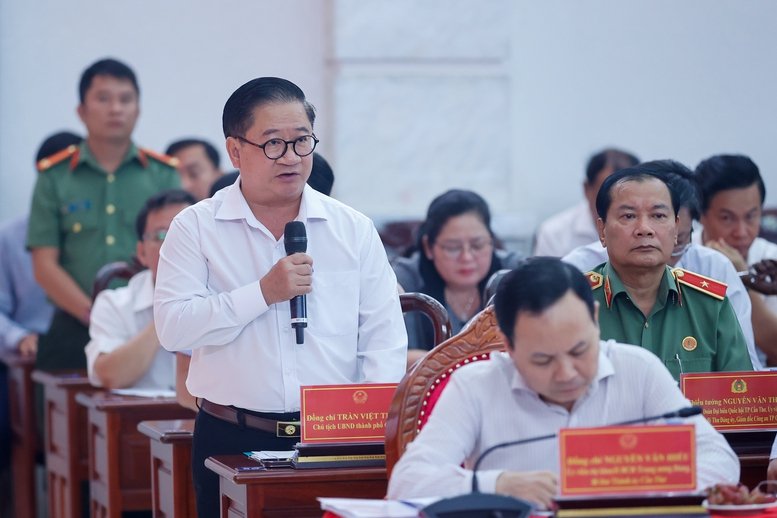
Chairman of Can Tho City People’s Committee Tran Viet Truong speaks at the conference – Photo: VGP/Nhat Bac
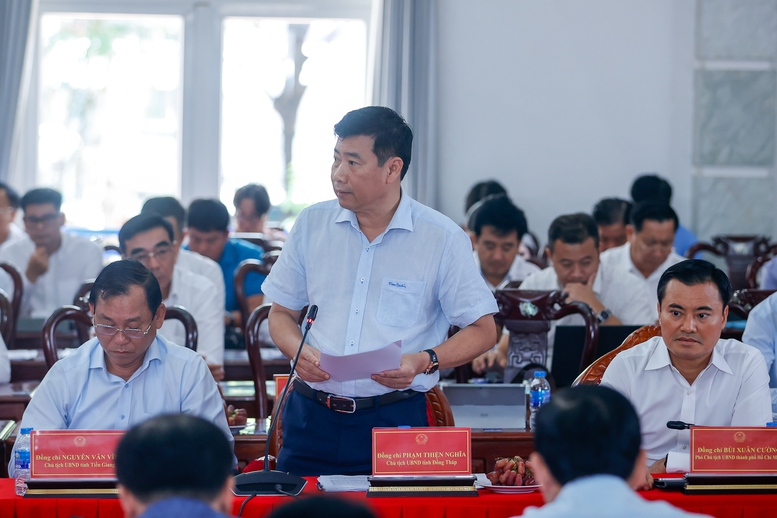
Chairman of Dong Thap Province People’s Committee Pham Thien Nghia speaks at the conference – Photo: VGP/Nhat Bac
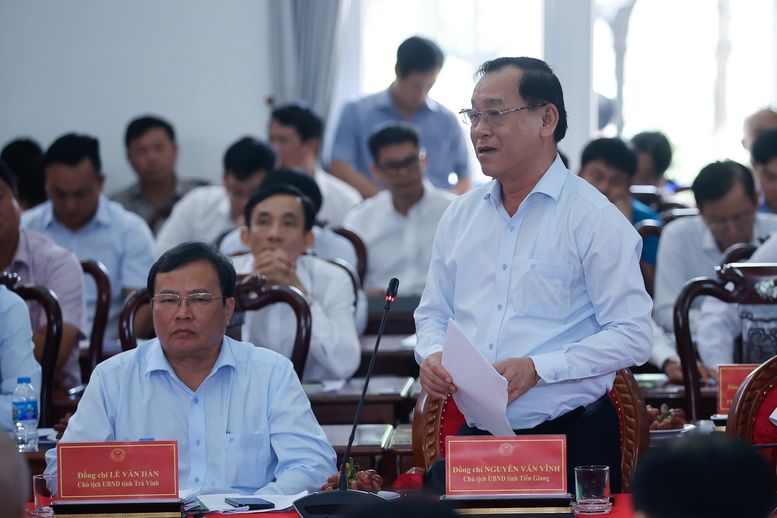
Chairman of Tien Giang Province People’s Committee Nguyen Van Vinh speaks at the conference – Photo: VGP/Nhat Bac
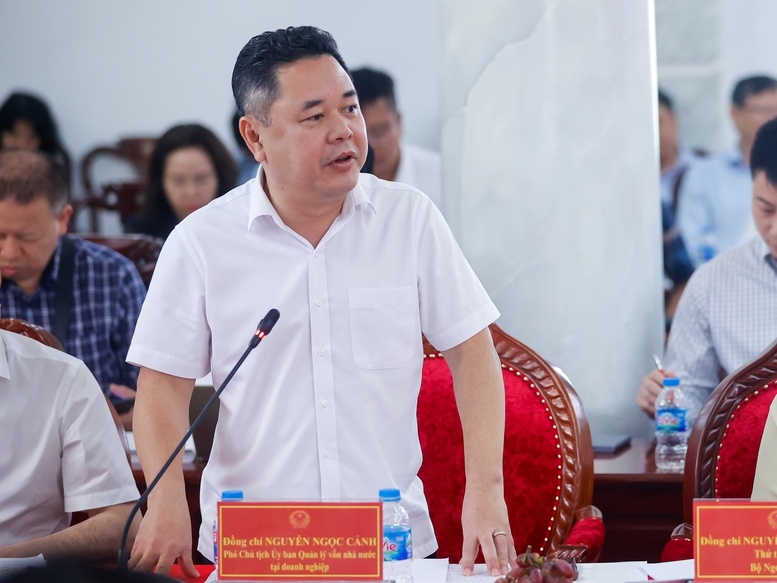
Vice Chairman of the State Capital Management Committee at Enterprises Nguyen Ngoc Canh speaks at the conference – Photo: VGP/Nhat Bac
Besides the substantial results achieved,
there remain certain shortcomings, limitations, and difficulties and challenges in project implementation
, such as management difficulties in
Mobilizing Over 6,500 Workers and 2,200 Equipment, Most Transport Projects in the Mekong Delta Are Still Delayed by 4-15% Due to One Main Reason
The Mekong Delta region is currently undertaking 9 critical national transportation projects with a total investment of 106,000 billion VND. 8 out of 9 projects are under active construction, while the My An – Cao Lanh Expressway project, funded by Korean ODA, is finalizing procedures and is expected to break ground in early 2025.
The Unassuming Province Transformed: A New 500-Square-Kilometer City for the Rising Star Tourism Destination
The city is strategically located in the economic development zone of the central coastal provinces, boasting a well-developed transportation system. With its proximity to sea ports, airports, and neighboring economic zones, it serves as a thriving hub for business and trade.
The City of Rails: An Opportunity to Embrace
High-speed rail lines are not just a transport project of paramount importance; they present a unique opportunity to redefine urban planning and catalyze development.













